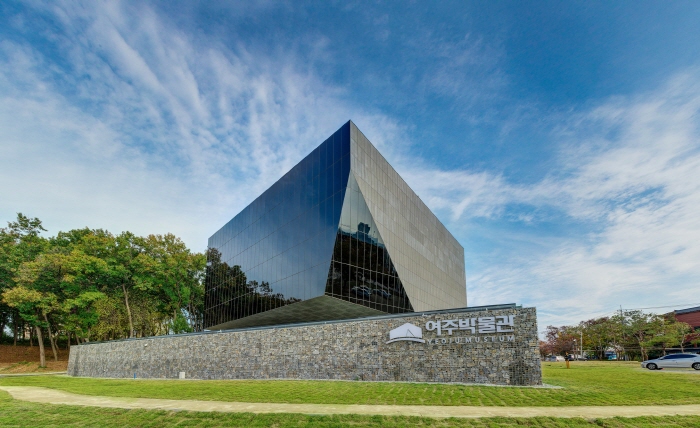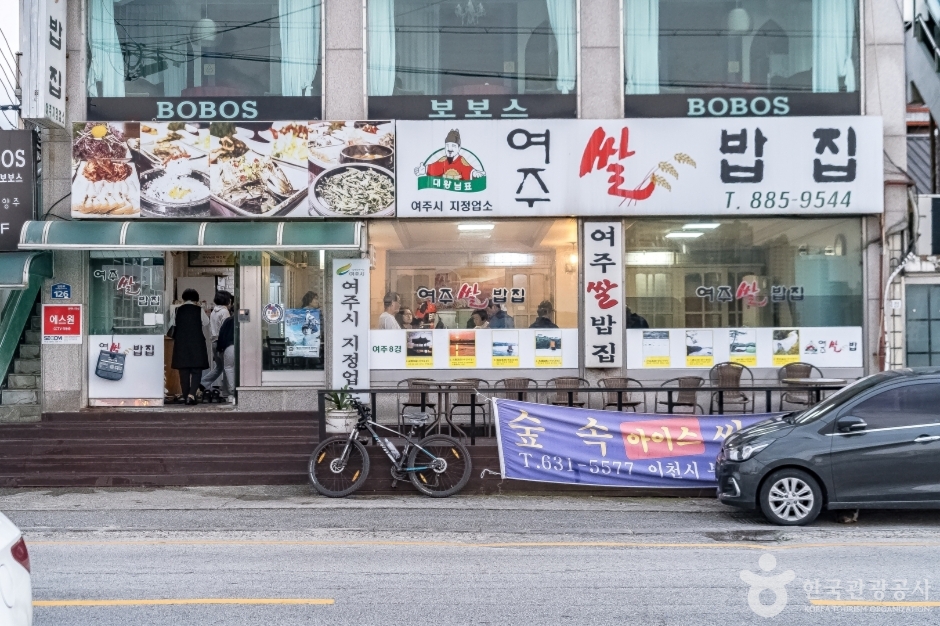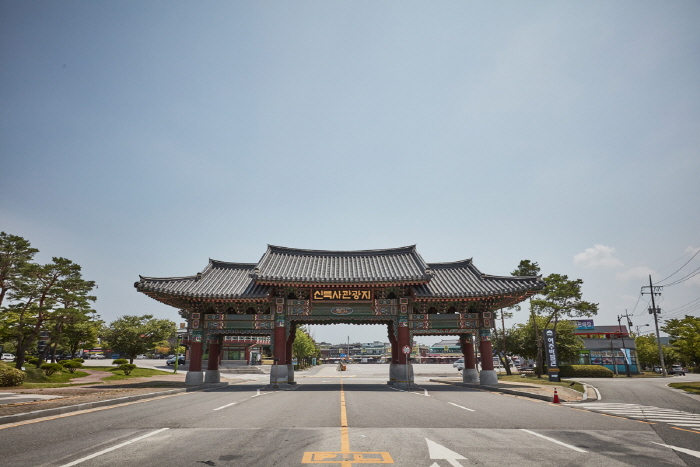Ilsung Namhangang Condo & Resort (일성남한강콘도&리조트)
509.6M 2025-03-16
5, Silleuk-ro, Yeoju-si, Gyeonggi-do
+82-1566-8113
Guests can enjoy the beautiful Namhangang River at Ilsung Namhangang Condo & Resort.
Yeoju Museum (여주박물관)
796.8M 2024-08-21
6-12 Silleuksa-gil, Yeoju-si, Gyeonggi-do
Yeoju Museum first opened in 1997 as the Yeoju Folk History Museum, surveying and displaying the history and relics of the area. The name changed to the current Yeoju Museum in 2016 with the addition of the Yeoma-kwan Building. The museum features both permanent exhibitions and planned exhibitions, as well as offering special lectures and educational programs.
Yeoju Dojasesang (여주도자세상)
833.4M 2024-08-29
7 Silleuksa-gil, Yeoju-si, Gyeonggi-do
Yeoju Dojasesang is a multicomplex operated by the Korea Ceramic Foundation that introduces ceramic designs through displays as well as sales in the nation's largest ceramic shopping mall. Another attractive feature of Yeoju Dojasesang is the craft studio, where artisians and visitors alike can create beautiful and unique works.
Yeoju Dojasesang (여주세계생활도자관)
837.8M 2021-07-30
7, Silleuksa-gil, Yeoju-si, Gyeonggi-do
+82-31-884-8644
Yeoju Dojasesang, which opened in March 2002, displays functional ceramics. The museum, with its four exhibition halls, has been displaying ceramics shown at the Korean International Ceramics Biennale for the past 10 years.
Yeoju Ogoknaru Festival (여주오곡나루축제)
991.8M 2025-07-09
Cheonsong-dong, Yeoju-si, Gyeonggi-do
+82-31-881-9692
The Yeoju Ogok Naru Festival celebrates Yeoju’s agricultural products and traditional culture. The festival features a Naru Madang that recreates the market street ambiance around the old traditional quay, an Ogok (five-grain) Madang with various agricultural and specialty products on sale, and traditional activity programs. There is also a food market and a craft market for a festival area.
Highkey Water Leisure (하이키수상레저)
1.0Km 2025-07-14
123-25 Gangbyeonbuk-ro, Yeoju-si, Gyeonggi-do
Highkey Water Leisure is located by the Namhangang River in Yeoju, Gyeonggi-do, allowing convenient access from Seoul. In addition to convenient water sports facilities, Highkey Water leisues offers a variety of activities such as speedboating, water skiing, wakeboarding, and other fun rides. The calm waters of the Namhangang River and trained instructors provide the ideal environment for beginners to learn wakeboarding and water skiing.
Yeoju Ssalbapjip (여주쌀밥집)
1.1Km 2024-02-23
126 Gangbyeon-ro, Yeoju-si, Gyeonggi-do
Yeoju Ssalbapjip, located near Yeoju City Hall, serves dolsotbap (hot stone pot rice) made with rice grown in Yeoju. Visitors can feel the warmth of its hospitality through its generous dishes. In addition to its signature menu, ssalbap jeongsik (steamed rice set menu), visitors can also enjoy a variety of dishes, such as samgyeopsal gui (grilled pork belly), duruchigi (stir-fried pork), pyeonyuk (boiled pork slices), gopchang jeongol (small intestine hot pot), and samhap hongeo (skate, pork, and kimchi combo). Situated in front of the Namhangang River, it also offers an excellent opportunity for a leisurely stroll along the riverbank.
Yeoju Silleuksa Temple (신륵사(여주))
1.4Km 2025-06-30
73 Silleuksa-gil, Yeoju-si, Gyeonggi-do
Silleuksa Temple is located along the upper section of the Namhangang River as it flows from Bongmisan Mountain in Yeoju. It is believed that Silleuksa Temple was built by Monk Wonhyo during the reign of Silla King Jinpyeong, but there is no evidence to prove this. The temple is famous for being a place where Naong Hyegeun stopped in 1376. The temple began to be called Boeunsa in 1472, but the name changed back to Silleuksa Temple in 1858.
Silleuk Temple Resort (신륵사관광지)
1.4Km 2021-11-05
73, Silleuksa-gil, Yeoju-si, Gyeonggi-do
+82-31-885-2505
The Silleuksa Temple Resort features countless relics and remains, awe-inspiring scenery, the Geumeun Sand Zone, and Silleuksa Temple. Silleuksa Temple is also referred to as the byeokjeol (‘walled temple’ because it has a pagoda made entirely of bricks). The pagoda was erected by the renowned Buddhist monk Wonhyo during the Silla Kingdom, and is visited by many who are drawn to the beautiful natural scenery along the banks of the Namhangang River, which is served by convenient transportation.
Yeoju Hwangpo Sailboat (여주 황포돛배)
2.2Km 2024-02-23
Cheonsong-dong, Yeoju-si, Gyeonggi-do
The Yeoju Hwangpo Sailboat, historically utilized for transporting goods in the Joseon period and propelled by the wind, has been recreated on the Namhangang River. It operates from the riverside recreation area to Silleuksa Temple, making the round trip seven times daily.







 English
English
 한국어
한국어 日本語
日本語 中文(简体)
中文(简体) Deutsch
Deutsch Français
Français Español
Español Русский
Русский